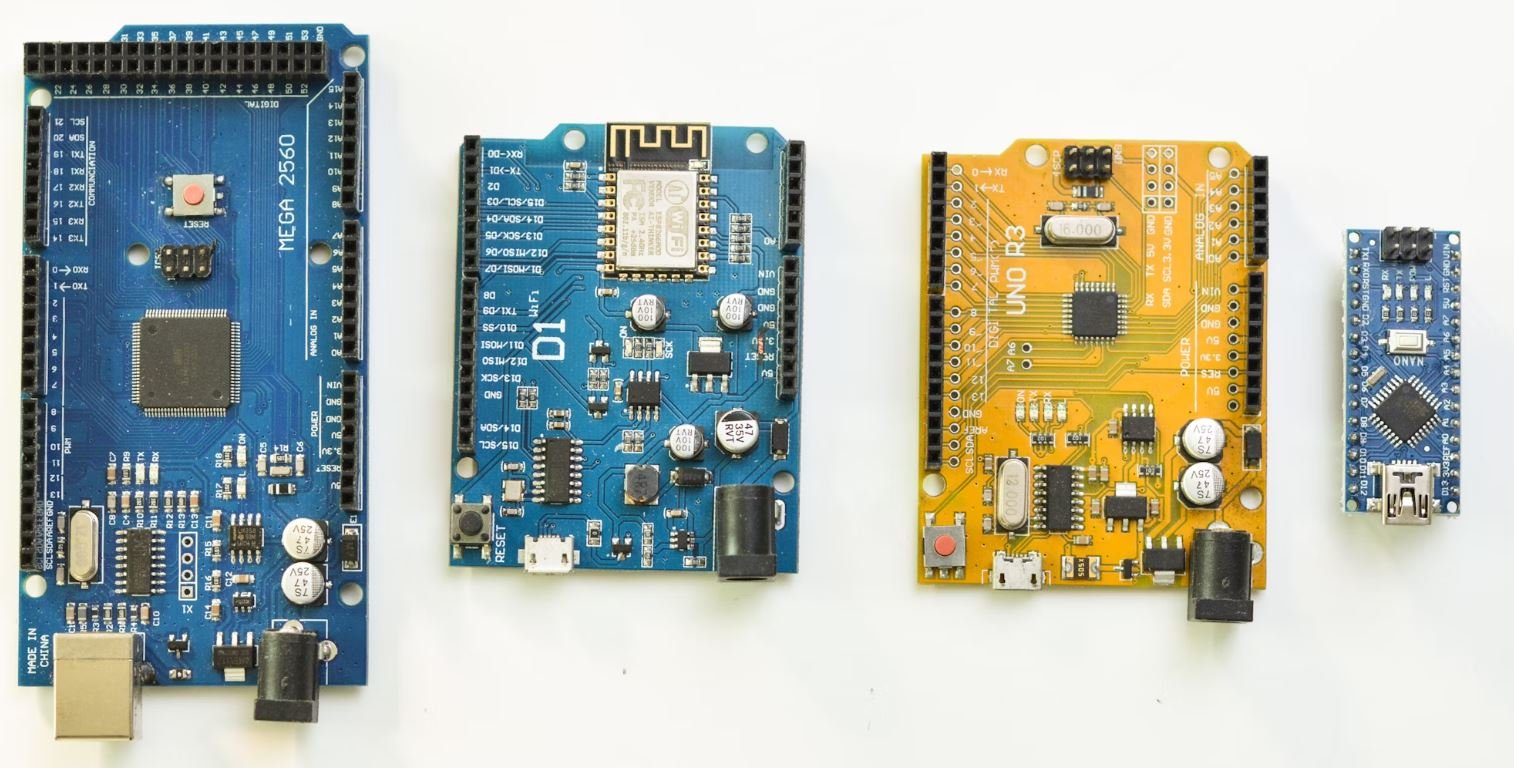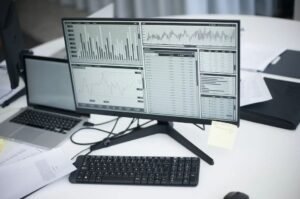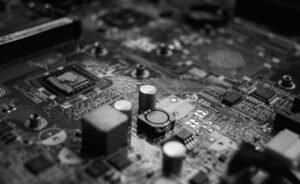AI vs RPA
Artificial Intelligence (AI) and Robotic Process Automation (RPA) are two technologies that have gained significant attention in recent years. While both AI and RPA involve automation, there are key differences between the two. In this article, we will explore what AI and RPA are, their key features, and how they differ.
Key Takeaways
- AI and RPA are both automation technologies but serve different purposes.
- AI focuses on simulating human intelligence, while RPA automates repetitive tasks.
- AI requires complex algorithms and large data sets, while RPA uses predefined rules.
- Both AI and RPA can be integrated into business processes to improve efficiency and productivity.
AI: Simulating Human Intelligence
Artificial Intelligence (AI) is a branch of computer science that focuses on creating intelligent machines capable of simulating human intelligence and behavior. AI systems are designed to perceive their environment, reason about it, and make informed decisions or take actions based on the available information. *AI has the potential to revolutionize various industries by enabling machines to learn from experience and perform complex tasks that were traditionally reserved for humans.*
RPA: Automating Repetitive Tasks
Robotic Process Automation (RPA) is a technology that allows organizations to automate repetitive and rule-based tasks to improve efficiency and accuracy. RPA bots are software robots that can mimic human interactions with computer systems, such as data entry, screen scraping, and data reconciliation. *RPA frees up employees from mundane tasks, allowing them to focus on higher-value work that requires critical thinking and creativity.*
Key Differences between AI and RPA
While AI and RPA both involve automation, there are significant differences in their underlying technologies and application scopes:
| AI | RPA |
|---|---|
| Focuses on creating intelligent machines. | Automates rule-based tasks. |
| Requires complex algorithms and large datasets. | Uses predefined rules and workflows. |
| Performs complex tasks that require reasoning and decision-making. | Performs repetitive tasks quickly and accurately. |
| Can analyze unstructured data and derive insights. | Handles structured data and follows predefined rules. |
AI and RPA Integration in Business Processes
Both AI and RPA have the potential to enhance business processes and improve overall efficiency:
- AI-powered analytics: AI can analyze vast amounts of unstructured data and extract meaningful insights, enabling businesses to make data-driven decisions.
- RPA process automation: RPA can automate repetitive tasks, reducing errors and speeding up processes, ultimately saving time and costs.
- Cognitive automation: By combining AI and RPA, businesses can create cognitive automation solutions that not only automate tasks but also incorporate reasoning, learning, and decision-making capabilities.
Comparing AI and RPA Applications
The table below provides examples of AI and RPA applications in different industries:
| Industry | AI Applications | RPA Applications |
|---|---|---|
| Healthcare | Medical imaging analysis, virtual nursing assistants | Automated claims processing, appointment scheduling |
| Finance | Fraud detection, algorithmic trading | Invoice processing, account reconciliation |
| Manufacturing | Quality control, predictive maintenance | Inventory management, order processing |
Conclusion
AI and RPA are powerful automation technologies that offer unique capabilities and benefits. While AI focuses on simulating human intelligence and performing complex tasks, RPA excels at automating repetitive tasks quickly and accurately. By leveraging the strengths of both technologies, businesses can optimize their processes and unlock greater efficiency and productivity.

Common Misconceptions
AI vs RPA
When it comes to the comparison between Artificial Intelligence (AI) and Robotic Process Automation (RPA), there are several common misconceptions that people often have. Let’s explore some of these misconceptions:
Misconception 1: AI and RPA are the same thing
- AI involves the development of intelligent machines that can mimic human behavior.
- RPA focuses on automating repetitive tasks and processes using software robots.
- AI has the ability to learn and adapt, while RPA follows predefined rules.
Misconception 2: AI will replace all human jobs
- While AI has the potential to automate certain tasks, it is unlikely to replace humans entirely.
- AI and RPA are more likely to augment human capabilities rather than replace them.
- AI can handle repetitive and mundane tasks, allowing humans to focus on more complex and creative work.
Misconception 3: RPA is the same as traditional automation
- RPA differs from traditional automation as it can perform tasks that typically require human input.
- RPA does not require complex programming skills and can be implemented relatively quickly.
- RPA can interact with multiple systems and applications for end-to-end process automation.
Misconception 4: AI and RPA are only relevant for large organizations
- AI and RPA can benefit organizations of all sizes by improving efficiency and productivity.
- Small and medium-sized businesses can leverage AI and RPA to streamline their operations.
- The cost of implementing AI and RPA has decreased over time, making it more accessible for organizations.
Misconception 5: AI and RPA are infallible and error-free
- AI and RPA systems are not immune to errors and can make mistakes.
- Errors can occur due to incorrect or incomplete data input, algorithmic biases, or system malfunctions.
- Regular monitoring and maintenance are necessary to ensure optimal performance of AI and RPA systems.

Artificial Intelligence (AI) and Robotic Process Automation (RPA) are two rapidly growing technologies that have transformed various industries. AI focuses on enabling machines to replicate human intelligence and perform tasks independently, while RPA automatizes repetitive manual processes. In this article, we present 10 tables highlighting the key differences and advantages of AI and RPA.
1. Target Industries:
From healthcare to finance, different industries benefit from AI and RPA. AI finds applications in healthcare diagnostics, customer service, and autonomous vehicles, while RPA excels in finance, HR tasks, and order processing.
2. Key Features:
AI utilizes advanced algorithms and machine learning to learn from data without explicit programming. On the other hand, RPA relies on rule-based automation to perform repetitive tasks quickly and accurately.
3. Decision-Making Abilities:
While AI can analyze extensive datasets, identify patterns, and make informed decisions, RPA follows predefined rules and cannot generate new insights without human intervention.
4. Integration Complexity:
AI systems require sophisticated integrations with existing infrastructure, such as data lakes and cloud platforms. In contrast, RPA implementations involve simple integration with user interfaces and systems.
5. Workforce Transformation:
AI has the potential to augment human abilities, leading to new job roles like data scientists and AI trainers. RPA, however, often replaces manual repetitive tasks, freeing up employees for more valuable work.
6. Adaptability:
AI models can learn from new data, adapt to changing circumstances, and continuously improve accuracy. RPA, although flexible, requires manual reconfiguration to accommodate process changes.
7. Training and Implementation Costs:
Implementing AI involves significant training costs due to the need for data scientists and machine learning experts. RPA, in contrast, is relatively cost-effective and can be implemented by non-technical staff.
8. Error Rate:
AI systems, once trained, demonstrate a lower error rate as they learn from previous mistakes. RPA, being rule-based, displays a high level of accuracy unless the underlying rules are modified.
9. Processing Speed:
AI algorithms require substantial computational power and time to process large datasets. RPA, on the other hand, operates at superhuman speed and can execute tasks rapidly.
10. Ethical Considerations:
AI raises ethical concerns, such as bias in decision-making algorithms or job displacement. RPA, being rule-based, is less prone to ethical dilemmas and focuses on process optimization.
In conclusion, AI and RPA play distinct roles in digital transformation. AI empowers machines with decision-making abilities based on data analysis, while RPA automates repetitive tasks. Both technologies offer unique advantages and have the potential to revolutionize various industries. Understanding their characteristics is essential for organizations aiming to leverage these technologies effectively.
Frequently Asked Questions
What is the difference between AI and RPA?
AI (Artificial Intelligence) refers to the ability of a computer system to perform tasks that would typically require human intelligence, such as speech recognition, decision making, and problem-solving. RPA (Robotic Process Automation), on the other hand, involves automating routine, rule-based tasks by using software robots or ‘bots’ to mimic human interactions with computer systems.
How does AI technology work?
AI technology is built upon machine learning algorithms that enable computers to learn from data and experiences without being explicitly programmed. These algorithms are designed to identify patterns, make predictions, and continually improve their performance through iterative learning processes.
What are the main applications of AI?
AI is being used in various fields and industries, including healthcare, finance, transportation, and customer service. Some common applications of AI include virtual assistants, autonomous vehicles, fraud detection, and personalized recommendation systems.
What are the benefits of RPA?
RPA offers several benefits, such as increased efficiency, accuracy, and productivity. By automating repetitive tasks, RPA allows employees to focus on more strategic and value-added activities. RPA can also help reduce errors and cost, enhance compliance, and improve customer service through faster response times.
Can AI and RPA be used together?
Absolutely. AI and RPA are complementary technologies that can work together to achieve even more significant results. By integrating AI capabilities, RPA systems can become more intelligent and adaptive. For example, AI can be used to analyze unstructured data, make complex decisions, and provide insights that can optimize RPA processes.
What are some challenges associated with AI and RPA implementation?
Implementing AI and RPA technologies may involve various challenges, such as data quality issues, integration complexities, and the need for upskilling or reskilling employees. Additionally, ethical concerns and the potential impact on jobs and the workforce are important considerations when implementing these technologies.
How secure are AI and RPA systems?
Like any technology, the security of AI and RPA systems depends on proper implementation and adherence to security best practices. With adequate security measures, such as encryption, access controls, and regular security audits, AI and RPA systems can be made highly secure and resistant to potential threats or attacks.
What role does human involvement play in AI and RPA?
While AI and RPA are designed to automate tasks, human involvement is still crucial. In the case of AI, humans play a role in training and fine-tuning the algorithms, as well as interpreting and validating the results. In RPA, humans are responsible for designing and monitoring the automated processes and handling exceptions or complex situations that require human judgment.
Are AI and RPA technologies expensive to implement?
The cost of implementing AI and RPA technologies can vary depending on factors such as the complexity of the application, the size of the organization, and the level of customization required. However, advancements in technology and the availability of cloud-based solutions have made AI and RPA more accessible and affordable for a broader range of businesses.
How can businesses determine whether AI or RPA is the right solution for their needs?
Choosing between AI and RPA depends on the specific requirements and goals of the business. If the focus is on automating repetitive and rule-based tasks, RPA may be the more suitable choice. On the other hand, if the need is for more advanced capabilities like natural language processing or complex decision-making, AI may be the better option. Consulting with experts in the field can help businesses assess their needs and make informed decisions.




